#9: You've Never Seen Anything Like It
Ed Jefferson is attempting to visit every Mews in Greater London. This week: Georgian car parks, photos of Ross Kemp, and cursed Lenin staircases, but first…
I started writing about something else entirely for this but ended up going too far down a research rabbithole I couldn’t write myself out of, so while I figure out what to do with that, here are some weird pop songs produced to promote urban development initiatives.
The late Ronnie Bond wrote several memorable TV ad jingles - most notably the one for all those ads where they tried to imply that eating a Cadbury’s Flake bar was mucky rather than just messy. But the pinnacle of his musical achievements has to be the presumably accidentally sarcastic sounding “You’ve Never Seen Anything Like It”, a record produced to promote the opening of Milton Keynes’ shiny new central shopping area in 19791.
Meanwhile in Teesside, a ‘90s ‘inspirational’ number from the Teesside Development Corporation about a vaguely Babelian-sounding “dream that we could share” in which we’ll “touch the sky”. I guess this was somewhat lost on the bunch of racist idiots who were trying to burn bits of Middlesbrough down over the weekend.
It was written and produced by Jon Craig, whose other notable contribution to culture is a bizarre phenomenon where people from this part of the country will (apparently) sing “South Cleveland Garages” instead of "Better than all the rest” whenever they hear Tina Turner’s Simply The Best, in reference to a once ubiquitous local radio ad campaign he devised.
But the ultimate example of this has to be ‘Energy In Northampton’, produced for the Northampton Development Corporation and sung by Linda Jardim (more widely heard as the singer of ‘Video Killed the Radio Star’) about a lost alien spaceship that escapes a neutron war to find a new home in Northampton, attracted by it’s ‘energy’ (and the Carlsberg lager brewery, according to an accompanying promotional video).
The B-side, lazily using almost exactly the same tune, follows a slightly more mundane journey - maybe they were worried people would think you could only arrive in Northampton by alien spacecraft, as it tells a beautiful love story about a lady from London who can’t wait to travel the 60 miles (by rail or road!) to reach her guy in “Northampton, Northampton, Northampton middle of England”. Maybe he was Alan Moore.
My fiancée is originally from Northampton, so perhaps I will suggest we do our first dance to this. Although it could encourage to get back on the train and leave me - as I understand it the journey back from London is just 60 miles!2
If anyone else has any leads on other records in the extremely niche genre of urban development pop, please let me know - when I’m in charge, all planning applications will be legally required to produce one.
THIS WEEK’S MEWSES
#81 Angel Mews, Islington, N1

Name obviously derives from the wider area - it is in fact very close to the site of the Angel Inn which gave Angel its name, though most recent incarnation of the building there now houses a Co-Op bank and some offices. History was marginally preserved for a while by a Wetherspoons pub named The Angel next door, of which I have somewhat foggy memories due to the occasionally absurdly low prices of beer, but Tim Wetherspoons flogged it off a couple of years back and the new owners have somewhat boringly renamed it The Junction. Presumably they wanted to throw the cheap beer fans off the scent.3
#82 Chadwell Mews, Islington, EC1R
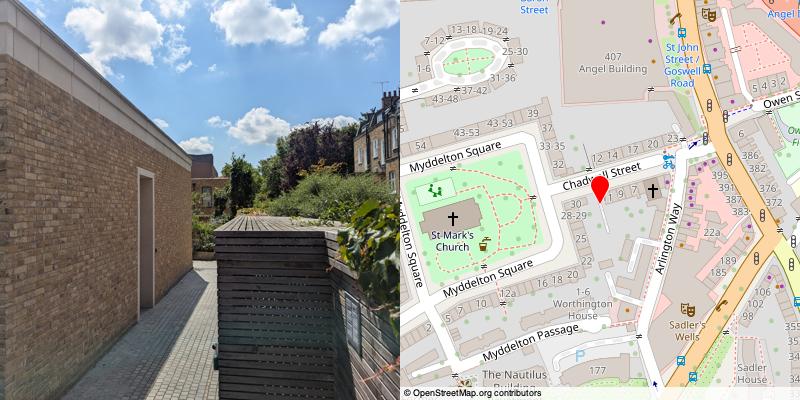
This was for a long time a car park, formed from the gardens of the house on Myddelton Square at time when many of them had been converted into flats, which consequently meant more cars, because that’s definitely the best way to travel around when you live in central London isn’t it?
There was a lot of fuss about the recent redevelopment and it's impact on the ‘character of the area’, as though Georgian estates are mainly characterised by their shitty old car parks. The result got nominated for some awards, though I don’t suspect that will have stopped the neighbours being snotty about it.
There was one correct objection, which was sadly ignored - you should be banned from putting locked gates on these developments in order that Mews perverts can have a sniff around.
#83 Ingle Mews, Islington, EC1R
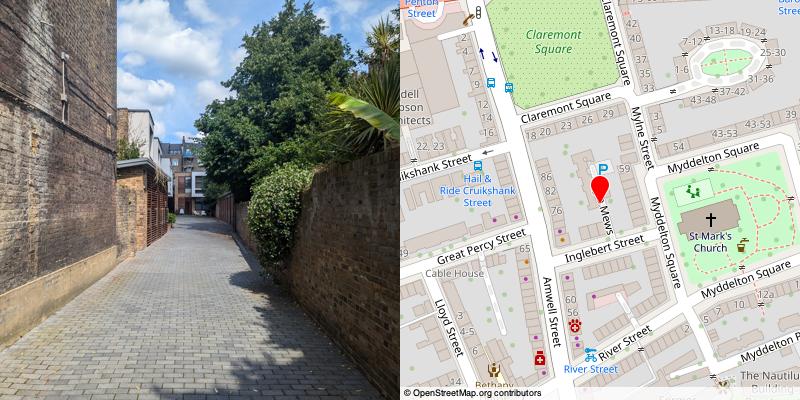
A yard of garages redeveloped sometime around 2007. The name, like many of the street names round here, is linked to the New River, a bit of London’s water supply developed in the 17th century that originally flowed through this part of Islington on its way to a reservoir at Clerkenwell - many of the streets here were laid out the New River Company who obviously had vested interest in there being property to which they could connect up pipes. (e.g. Chadwell Mews/Street - see above - derives from the Chadwell spring in Hertfordshire that was one source of the water).
William Inglebert was an engineer whose main contribution appears to have been the suggestion new supply should be carried in a brick trench, a good suggestion in engineering terms but no-one wanted to shell out the money for thirty miles worth of bricks. Still, got him a road named after him apparently!
This Mews development, off Inglebert Street, was itself initially called Inglebert Mews - unclear why it was shortened but I have the unfounded suspicion it may have made it easier/cheaper to fit the name on the metal gate at the front. They’ve done you again, Inglebert!
#84 River Street Mews, Islington, EC1R
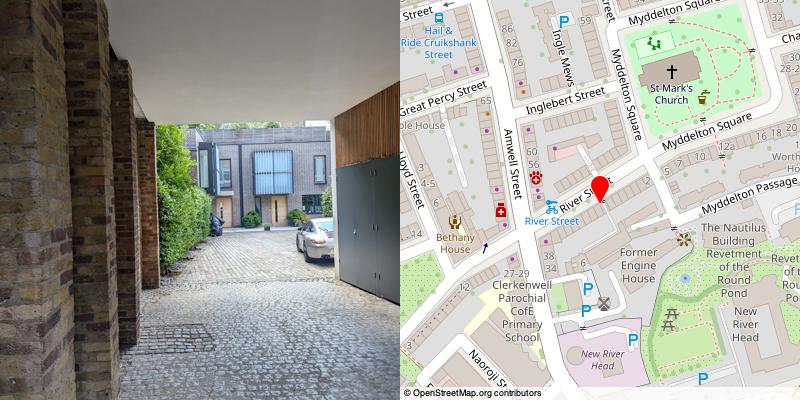
A fairly obvious explanation for the name if you’ve been reading this far, although it is obviously a bit confusing to have a River Street Mews named after a River Street that is named after a thing that isn’t a River that now stops several miles away. The Mews is yet another gated development. 😠
#85 Soley Mews, Islington, EC1R
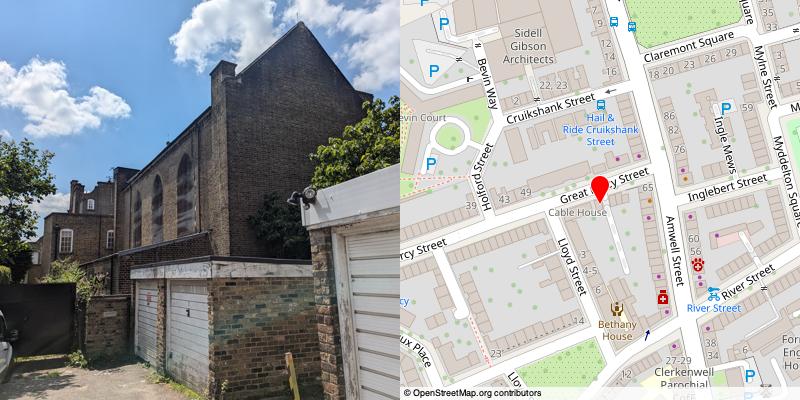
Definite actual Mews klaxon - there are newspaper ads from the 1870s offering stables for rent.
At the far end is Soley Mews Chapel, which was not called that when it actually was a chapel for the House of Retreat, a nunnery on an adjacent that has since decamped to the south coast. After their departure their buildings were bought by the YWCA, who used the chapel as as a sports hall. For some years it then became the photography studio of Mike Owen, who has photographed a lot of famous people judging by his instagram and once took pictures of Ross Kemp outside the chapel, it says here.
Circa 2010 it was turned into a 3 bedroom house - the residents presumably have to put up with confused people turning up to have a bit of a pray or recreate their favourite photo of Ross Kemp.
The Mews itself is now used as a car park the nearby Brownings Garage who keep trying and failing to get permission to redevelop this into workshop space that could also be hired out to other businesses. I have slightly more sympathy for the objections to this, partly because I don’t have much sympathy for the ‘car housing crisis’ but mostly because the architects’ computer rendering of the development is laughably fanciful in how much space it suggests there actually is here.
#86 Holford Mews, Islington, WC1X
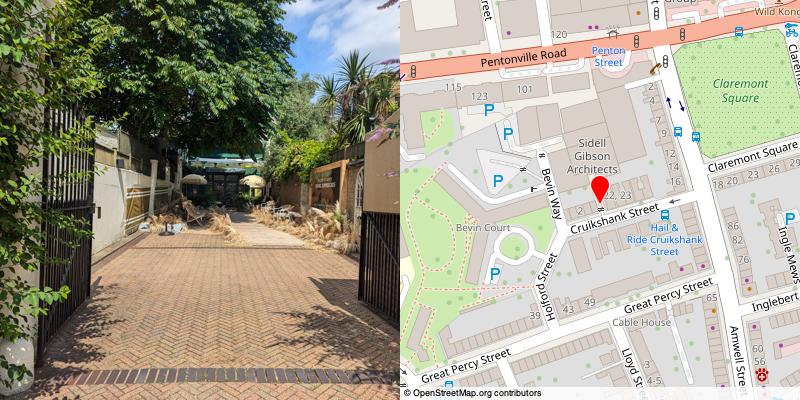
Home to an architecture firm and the London showroom for Barbour, suppliers of waterproof and protective clothing to the King. OR IS IT?
What's now called Holford Mews is, on pre-war maps, unnamed, although it leads onto Holdford Yard - curiously where the original Holford Mews sits is now a road called Holford Yard, so it appears that at some point in the last 80 years of development and redevelopment the two names got transposed somehow? Maybe they had to swap identities to cover up a murder.
The original Holford Mews was a road off Holford Square4, which was badly bombed in the war, then replaced with a housing scheme by pioneering architect Berthold Lubetkin.
The main building of the scheme was originally going to be named after Lenin, who had lived on Holford Square during his time in London. Lubetkin himself had designed a memorial to Lenin that had been erected in the Square during the War, but this didn’t go down well with everyone - it had to have a permanent police guard after fascists defaced it - and by the time the building opened in 1954, with the Cold War well underway, it was decided to name the building after Ernest Bevin instead.
The Lenin memorial was purportedly buried under the central staircase, though it’s unclear whether this was intended to curse or bless it - the bust of the man himself survived and can be seen in a nearby library.
#87 Hardwicke Mews, Islington, WC1X
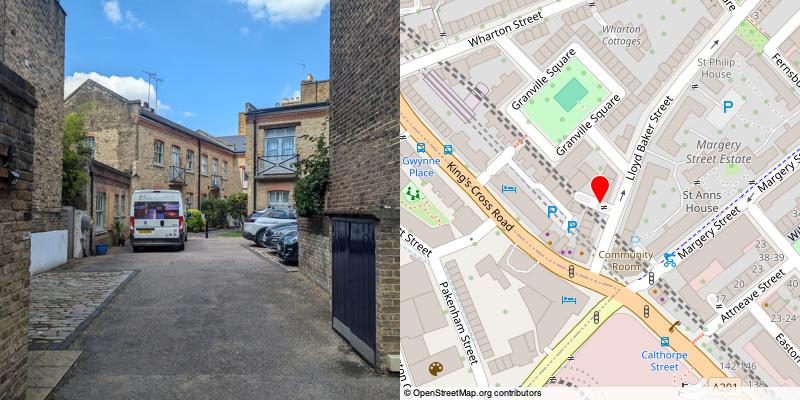
Has some likely Mews history as stabling, though appears to have only gained a name when it was redeveloped in 1996. The original ads for the modern incarnation as “spacious, high specification apartments” claim instead that it was once a bakery, but I am a bit suspicious of this - it being on Lloyd Baker Street and having once been home to a chair upholstery firm named Baker & Lucas does introduce at least the seed of doubt as to the quality of the research there.5
#88 Garnault Mews, Islington, EC1R

After either Aymé or Samuel Garnault, treasurers of… you’ve guessed it, The New River Company.
Once an actual mews (according to an ad in The Telegraph, go back in time to April 1882 and you can buy a horse that can trot with over two tonnes of weight!), now essentially just a cut through providing rear/side access to various buildings on the surrounding streets. In between housed various light industry including: a firm making surveying instruments, a metal polishers and a harmonium manufacturer. Nowadays mostly surrounded by advertising agencies called things like ‘The Idea Factory’ and ‘Wow!’. Harmoniums, retvrn.
It appears in a short story called ‘The Curious Cardboard Boxes’, which I guess you’d have to class as Sherlock Holmes fan-fiction, although it has pretensions so he doesn’t cop off with Pikachu or anything.
#89 Dickens Mews, Islington, EC1M
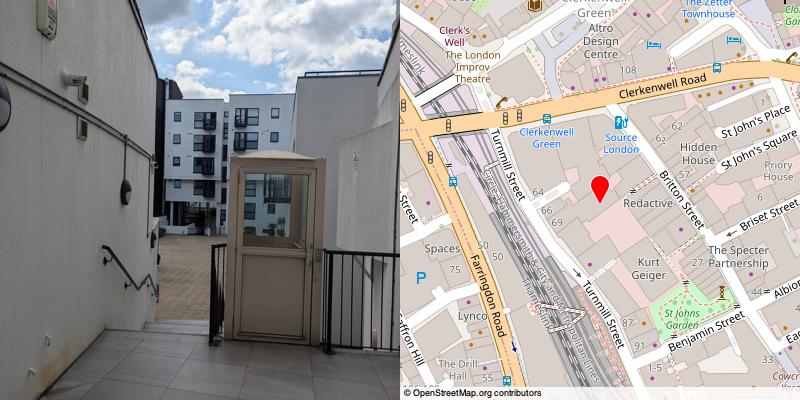
Gated development up the road from from Farringdon station, and honestly if ‘Dickens Mews’ is the best you can come up for a housing development in London… I dunno, I guess there if you look hard enough you can find a tenuous historical connection like in the approximately 98 thousand houses around the country that have a ‘Charles Dickens once glanced at this’ blue plaque.
#90 Charterhouse Mews, Islington, EC1M

Originally a stabling block for the nearby Charterhouse building complex (original site of the posh school). The name Charterhouse has no literal meaning, being an Anglification of Chartreuse - the buildings originated as a Carthusian monastery, the Carthusians having built their first home in the Chartreuse Mountains.
It’s a shame this Anglification happened, as otherwise this would have been called Chartreuse Mews, which would be fun to mispronounce in at least two different ways.
MEWSES VISITED SO FAR:
90/2380
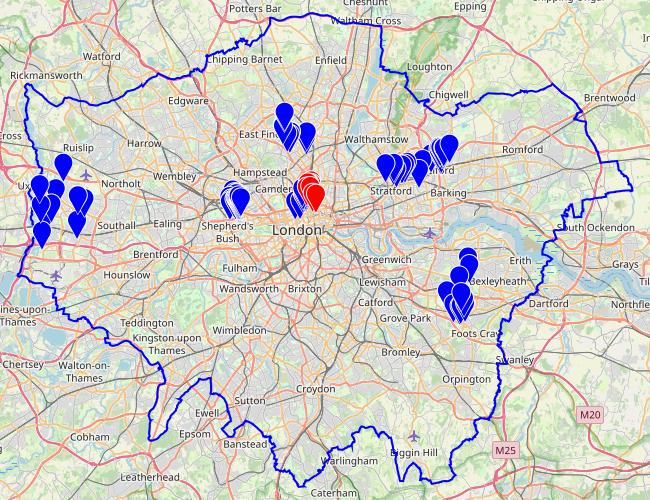
Actual opening performed by one M Thatcher. ↩
While bigging up your town purely on the basis that it is relatively close to London feels like a bit of a self-neg, the original campaign has more recently been reimagined by the 60 Miles arts organisation, who have in various forms told stories that are actually about the town rather than about its proximity to other stuff, or aliens. ↩
To add to this nominative confusion, the Mews is home to the Cubitt art gallery/co-operative, named for its old location on Cubitt Street. There is an Angel art gallery, but it’s in Shropshire. Just very upsetting all round. ↩
Various members of the Holford family were involved with the New River, obviously. ↩
I on the other spent ages squinting at an estate agent’s ad for an apartment trying to work out if the framed copy of Diamond Dogs by David Bowie and a weird silver skull sculpture signified that anyone notable had lived there. Inconclusive. ↩
Add a comment: